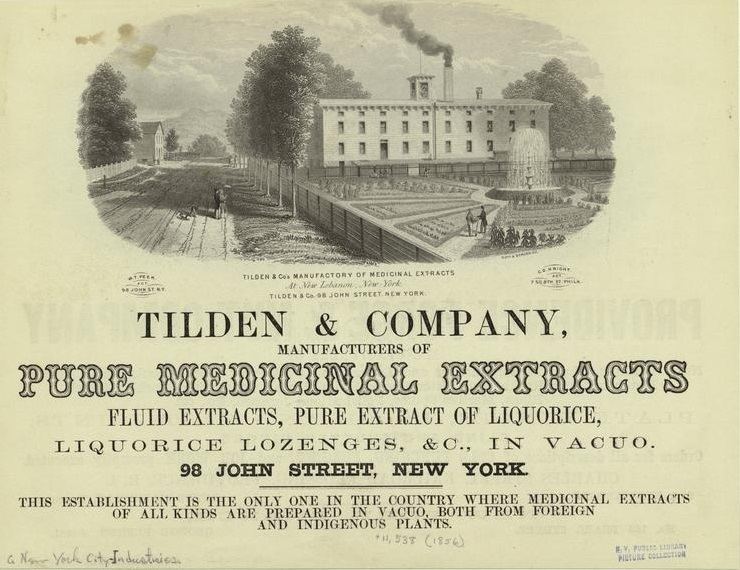 | ||
Tilden’s Extract was a 19th-century medicinal cannabis extract, first formulated by James Edward Smith of Edinburgh.
In the United States, The Tilden Company of New Lebanon, New York manufactured and sold the extract under its own name, advertising the drug as:
Phrenic, anæsthetic, anti-spasmodic and hypnotic. Unlike opium, it does not constipate the bowels, lessen the appetite, create nausea, produce dryness of the tongue, check pulmonary secretions or produce headache. Used with success in hysteria, chorea, gout, neuralgia, acute and sub-acute rheumatism, tetanus, hydrophobia and the like.
The Tilden Company was the family business of New York Governor and 1876 Democratic nominee for President Samuel J. Tilden.
The American author Fitz Hugh Ludlow used Tilden’s Extract recreationally, and wrote the book The Hasheesh Eater (1857) about his experiences.
O.J. Kalant estimated the strength of the extract and of Ludlow’s doses as follows:
Ludlow consistently talked of “hasheesh” but in fact he took the solid extract of Cannabis Indica which was roughly twice as potent as the crude resin and ten times as potent as marijuana. A rough calculation shows that his intake was equivalent to about 6 or 7 marijuana cigarettes per dose, i.e. at the hallucinatory rather than at the euphoriant level prevalent in contemporary North American use.
Ludlow wrote of taking as much as a drachm of the extract (3.9 grams, .14 ounces) in his largest doses — if Kalant’s figures are correct, this is equivalent to a quarter-ounce of resin or well over an ounce of herbal cannabis.
